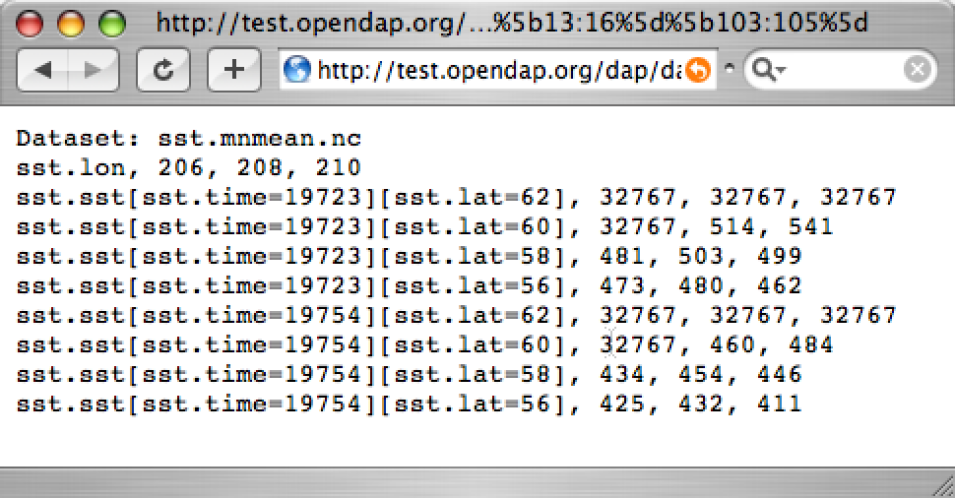Table of Contents
1. Introduction
Open-source Project for a Network Data Access Protocol (OPeNDAP) is the developer of client/server software, of the same name, that enables scientists to share data more easily over the internet. The OPeNDAP group is also the original developer of the Data Access Protocol (DAP) that the software uses. Many other groups have adopted DAP and provide compatible clients, servers, and SDKs. OPeNDAP’s DAP is also a NASA community standard. For the rest of this document, "OPeNDAP" will refer to the software.
With OPeNDAP, you can access data using an OPeNDAP URL of any database server that supports OPeNDAP. You can do this via command-line, Internet browser, or a custom UI. You can also use other NetCDF compliant tools, such as Matlab, R, IDL, IDV, and Panoply.
This quick start guide covers how to use OPeNDAP in a typical web browser, such as Firefox, Chrome, or Safari, to discover information about data that is useful when creating database queries. For additional information, see the OPeNDAP User Guide.
1.1. Key Terms
- Constraint Expressions: Criteria that limits what data is returned from a database. Because most databases will have far more data than you want, you’ll want to find out something out about the data and then use that information to constrain your queries.
- DAS (Data Attribute Structure): Similar to a DDS but contains information about the data, such as units and the name of the variable.
- DAP (Data Access Protocol): A data transmission protocol designed by OPeNDAP specifically for science data. The protocol relies on the widely used and stable HTTP and MIME standards and provides data types to accommodate gridded data, relational data, and time series, as well as allowing users to define their own data types.
- DDS (Dataset Descriptor Structure): Provides a description of the "shape" of data in a database, using a vaguely C-like syntax.
- Hyrax: The server half of OPeNDAP, developed by the OPeNDAP group.
- OPeNDAP URL: An OPeNDAP URL is a URL that includes "opendap.org" and enables you to access data on a database server on which OPeNDAP is implemented.
2. What to do With an OPeNDAP URL
Suppose someone gives you a hot tip that there is a lot of good data at the following URL:
http://test.opendap.org/dap/data/nc/sst.mnmean.nc.gz
This URL points to monthly means of sea surface temperature, worldwide, compiled by Richard Reynolds of the Climate Modeling branch of NOAA.
The simplest thing you can is to download the data to which the URL points. You could feed it to an OPeNDAP-enabled data analysis package, like Ferret, or you could append .ascii and feed the URL to a regular web browser. However, this approach would be less than ideal because there is a large quantity of data that you probably would not want at that URL. Instead, you will want to learn something about the type of data comprised by the database and then use constrained queries to retrieve only the data you need.
2.1. An Easy Way: Using the Browser-Based OPeNDAP Server Dataset Access Form
OPeNDAP includes a way to sample data that makes writing a constraint expression somewhat easier than using only a URL to do the same thing. Append .html to an OPeNDAP URL, and you will get an OPeNDAP Server Dataset Access Form that simplifies the process for sampling data.











